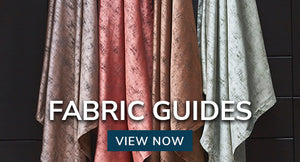What fabric types are best for sensitive skin?
Finding the best fabric type for bedding depends on more than its colour or price. An important consideration is how your skin reacts to what is put on the bed, such as pillowcases, duvets, pillows and sheets. Allergies that cause rashes or sneezing interfere with quality sleep. Fabrics are sorted into three broad categories based on their properties: natural, cellulosic, and synthetic.
Natural fabrics
Natural fabrics come from plants and animals and have anti-microbial qualities. Cotton, silk, wool and linen are common bedding materials. Jute is a plant-sourced fabric best known for making burlap sacks. New to bedding, it adds strength when blended with other natural materials. Irritation is minimal when only short fibres are used.
Animal-sourced cashmere is recognised for more than incredibly soft shawls and sweaters. Cashmere coverlets resist piling and grow even softer over time. Its insulation qualities provide warmth in winter and coolness during the spring.

Hypo-allergenic silk is an elegant, yet comfortable natural fabric. Mulberry silk is a consumer favourite when selecting sheets and pillowcases for people with sensitive skin. Like other natural fabrics, silk provides temperature regulation, absorptivity, and breathability.
Cellulosic fabrics
Cellulosic (man-made) fabrics are made from wood pulp or bamboo. The earliest example is rayon, developed in the 1850s. It provides comfort to sensitive skin is by not building up static electricity. Rayon is a useful bedding fabric in humid, hot climates because it does not insulate body heat. It absorbs more moisture than cotton.
Known by its generic name Lyocell or as Tencel®, this man-made fabric was developed in the 1990s. It supports the health and well-being of all types of skin, including sensitive. The fabric regulates body temperature and preserves water balance. Soft fibres avoid the hazard of skin irritation. The sustainable fabric is environmentally friendly. It discourages allergic reactions because it is made without chemical treatments. The moisture managing process prevents bacterial growth.

Bamboo fibres produce an antibacterial, hypo-allergenic bedding fabric and is gentle to skin. Products including pillows, sheets and duvets have a special washing and drying process. Although bamboo is a natural plant the cellulose fibres usually have chemical added and many bamboo fibres are chemically manufactured and regenerated into cellulose fibres.
Synthetic fabrics
Fashionable synthetic bedding fabrics vary based on their make-up. Overheating and over-cooling distract from their use because breathability is not allowed. The fabric may inhibit water absorption and heat regulation. Some synthetic fabrics are hygienic and non-allergenic. Polyester bedding is popular with consumers because it is easy to clean. It dries quickly and is lightweight. Micro-fibre, made from small polyester pieces, is soft and gentle to the skin.

Reduce the chance of skin irritation from any type of fabric by washing the bedding before it is used, and always following the manufacturer’s instructions. Launder bedding at least once each week if you have severe sensitivities, including asthma and, when possible, dry your bedding outside in the fresh air.



























































